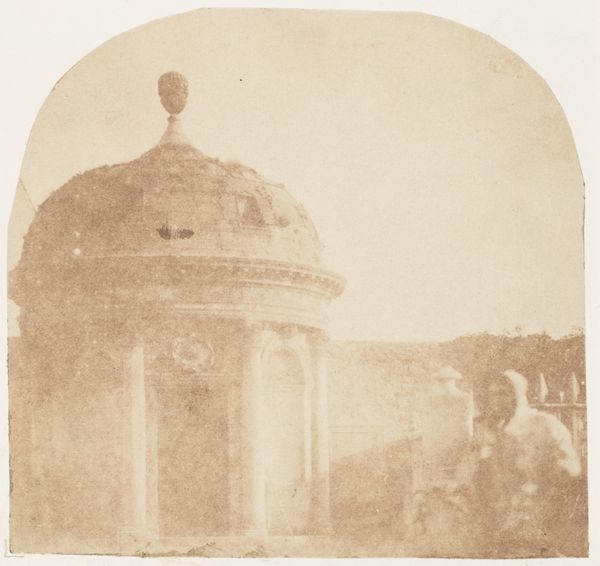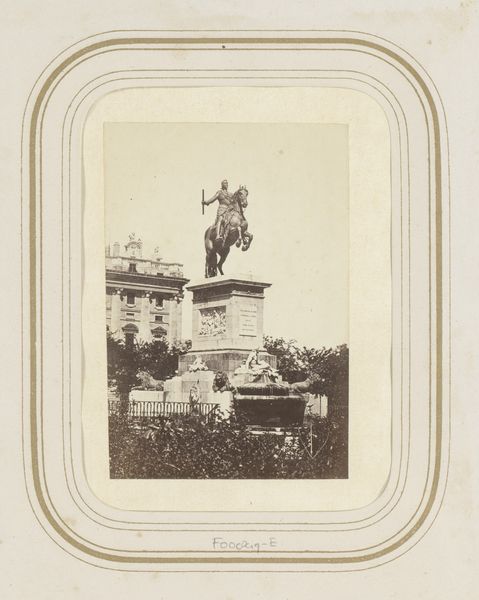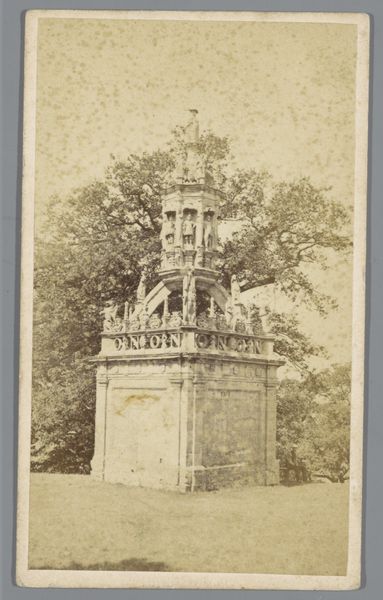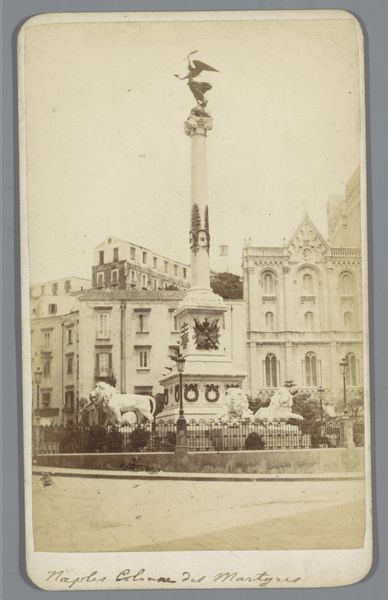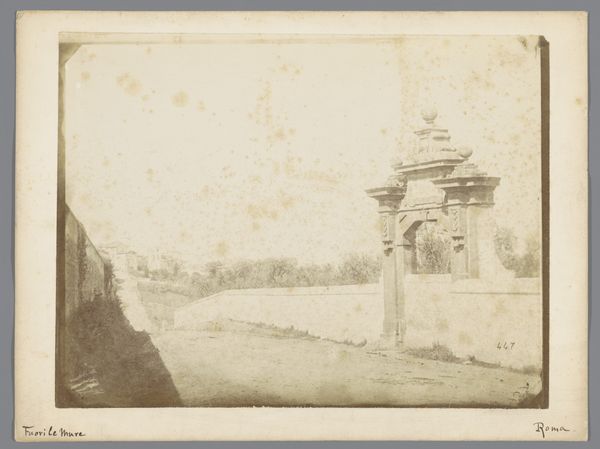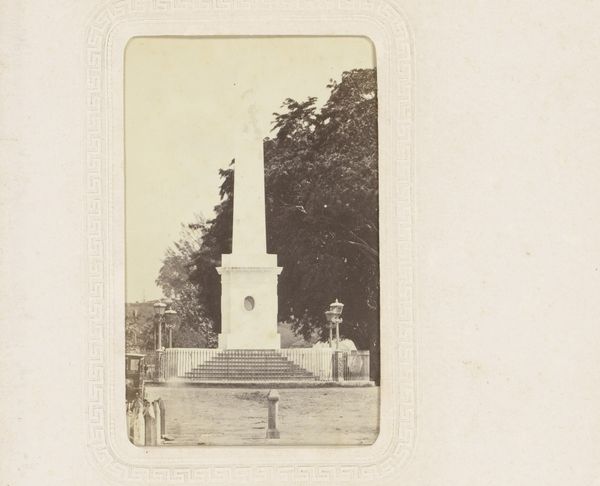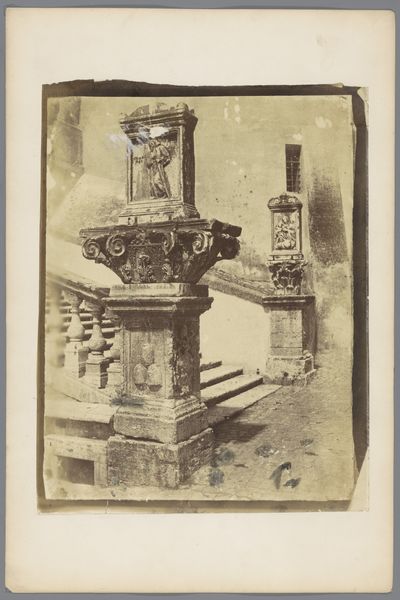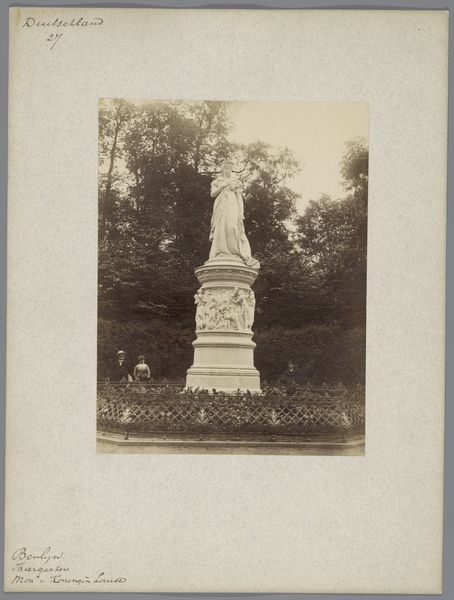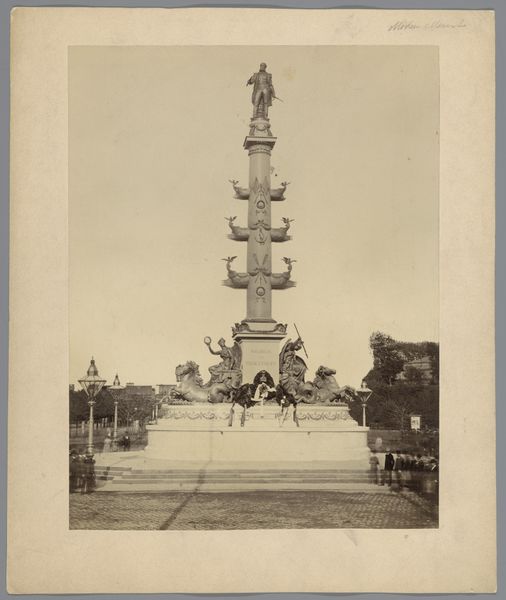
photography, albumen-print, architecture
#
portrait
#
landscape
#
photography
#
albumen-print
#
architecture
Dimensions: 7 5/8 x 5 5/8
Copyright: Public Domain
This photograph of the Edinburgh Monument was made between 1843 and 1848 by David Hill and Robert Adamson using the calotype process, one of the earliest forms of photography. The sepia tones of the print are a direct result of the chemical process used to fix the image onto paper. What's interesting about the calotype is its direct engagement with the materiality of paper. The paper's texture and its reaction to light-sensitive chemicals are key to the final image. Unlike later photographic processes that prioritized sharpness and detail, the calotype embraces a softer, more atmospheric quality. This aesthetic was very different from the clean lines and precision of industrial production that was starting to take hold at the time. Hill and Adamson’s choice of the calotype reflects a conscious decision to engage with craft-based methods. In doing so, they elevated photography beyond mere documentation, infusing it with artistic expression that blurred the lines between fine art and the more hands-on world of craft. It reminds us that even in the age of mechanical reproduction, the human touch and the inherent qualities of materials can shape how we see and understand the world.
Comments
No comments
Be the first to comment and join the conversation on the ultimate creative platform.
